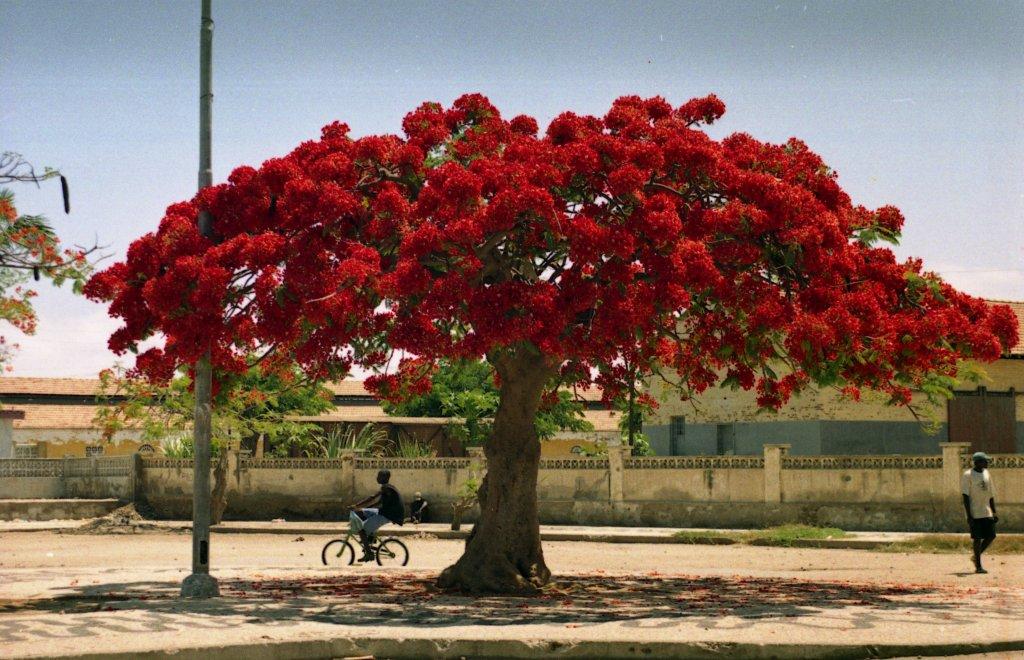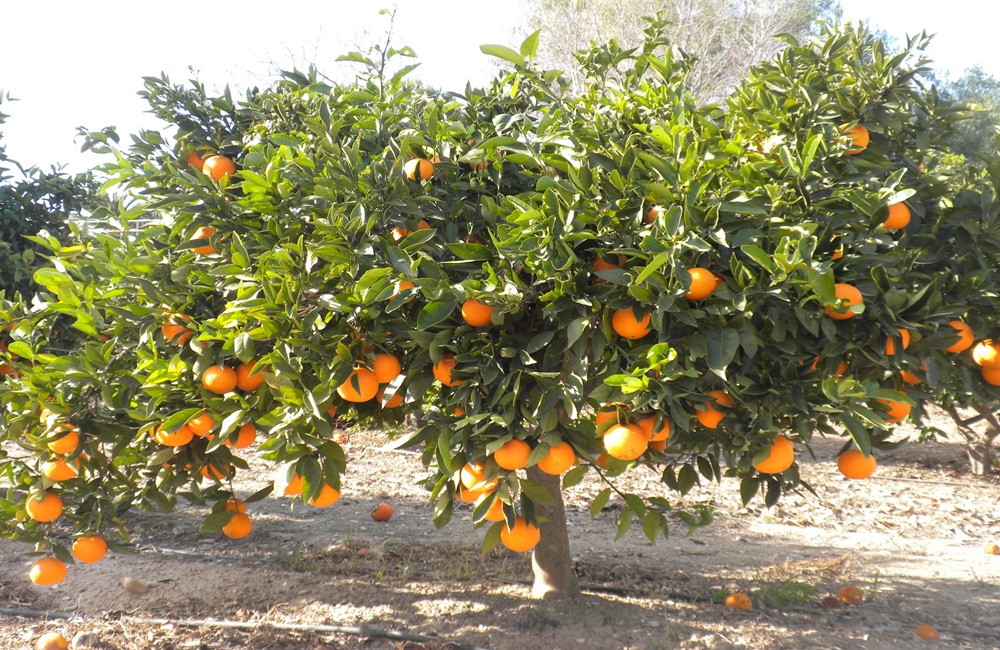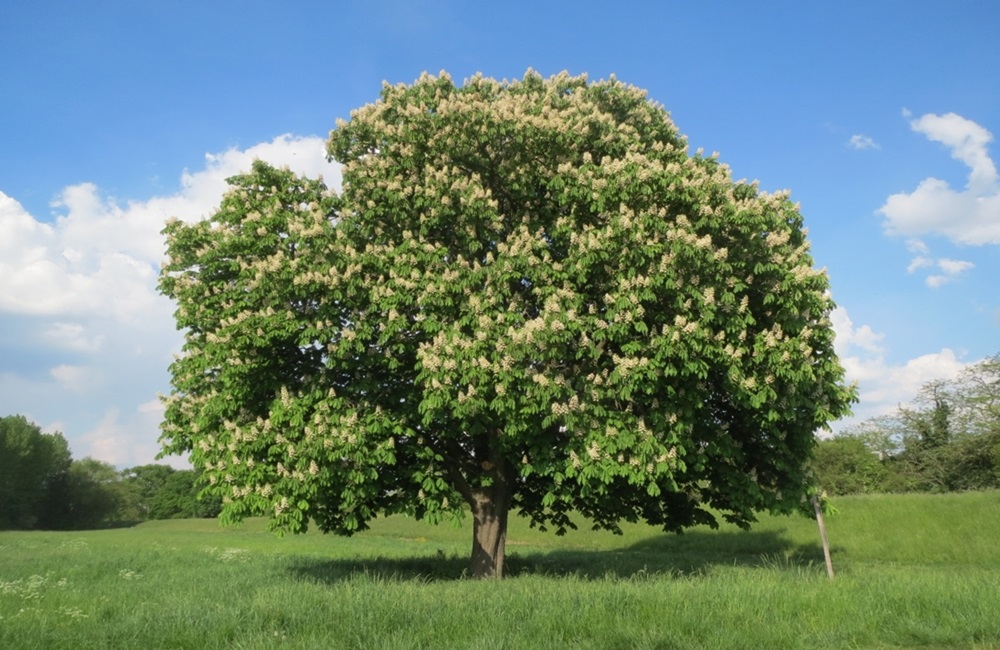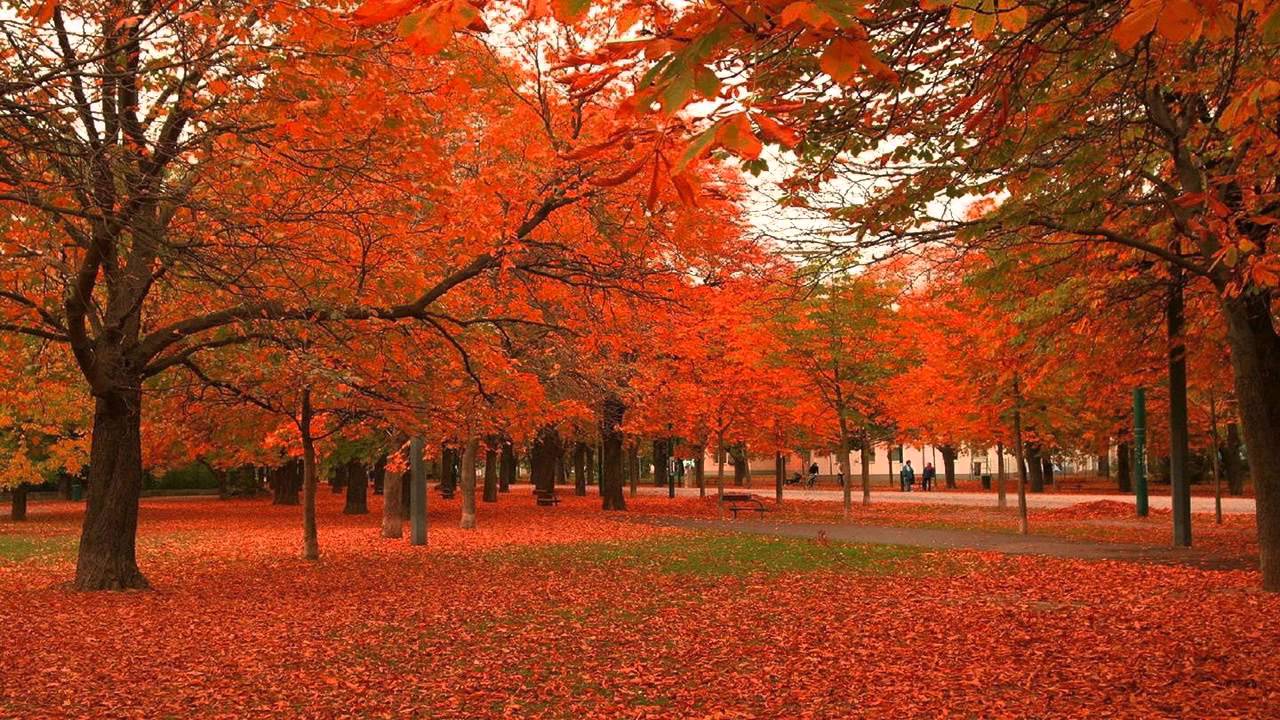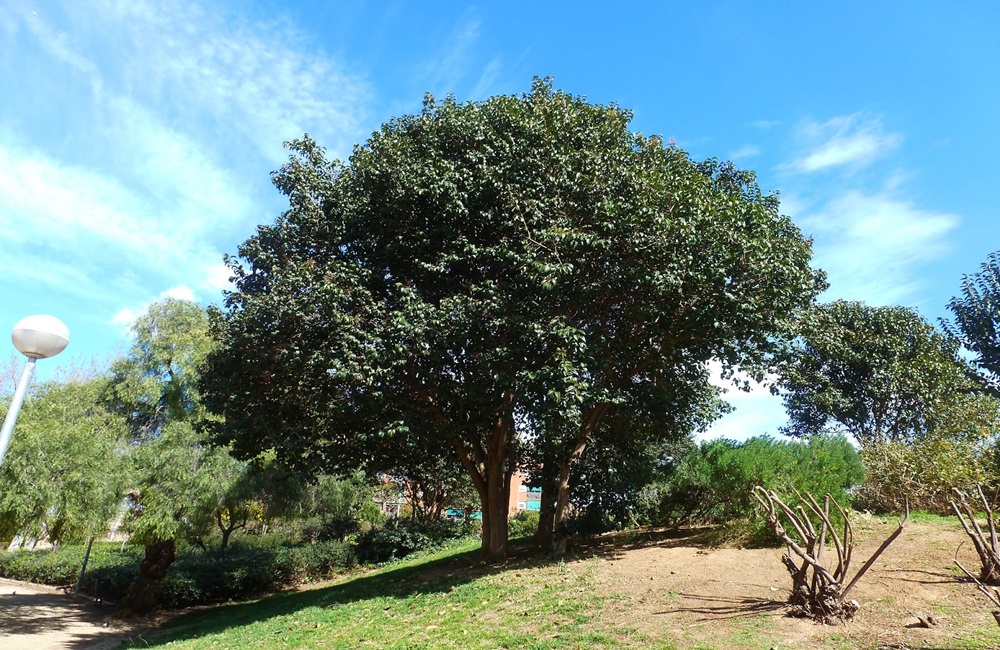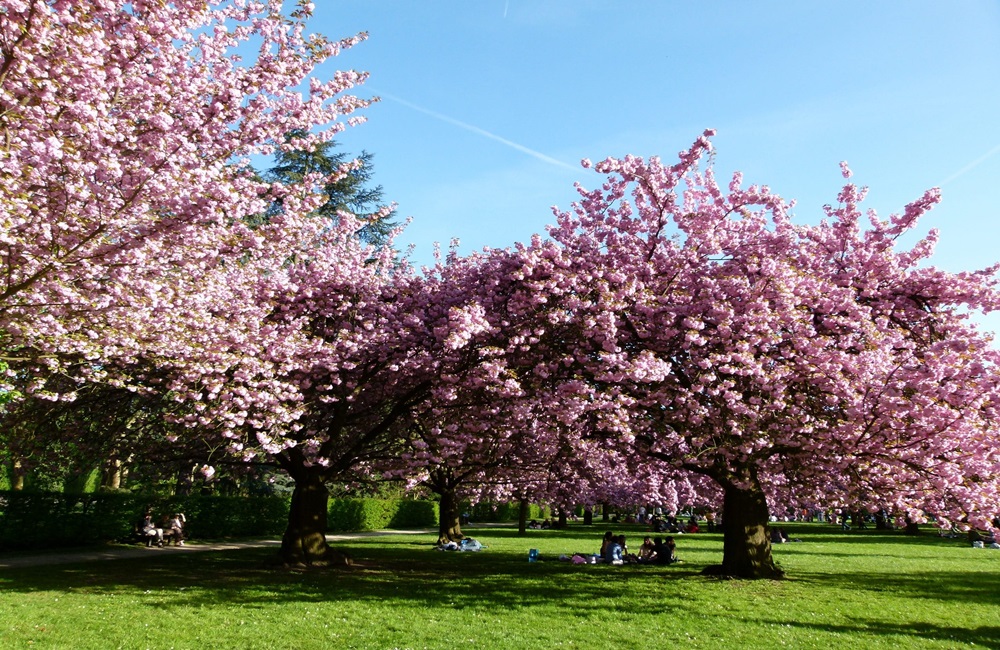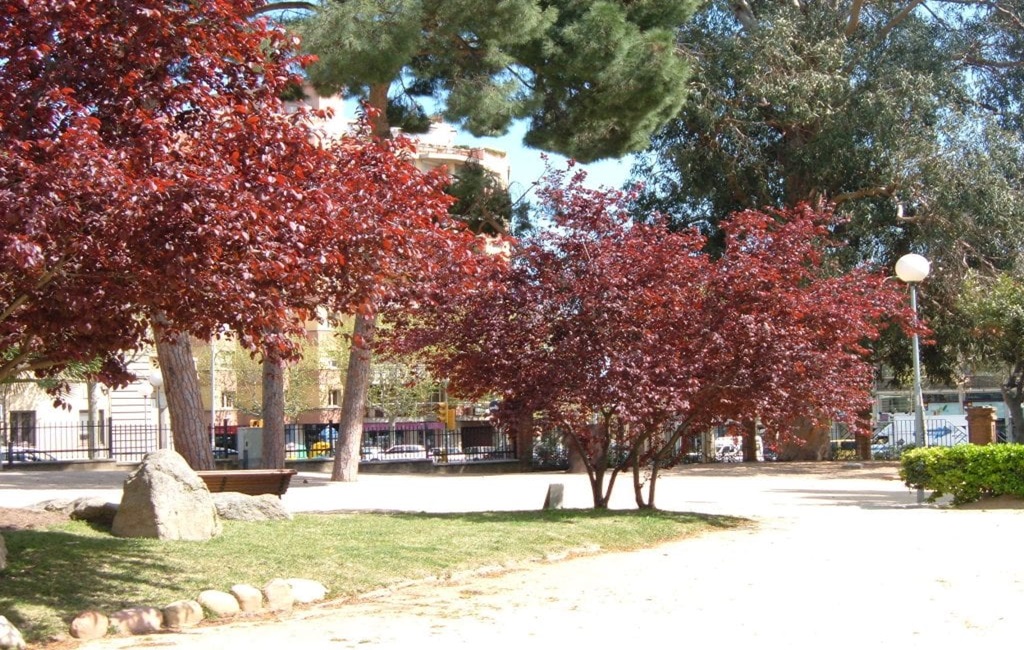Is there a small space in your house that receives too much sunlight? Maybe it's time to think about having a little rooted tree and shade, because that way, you can have an ideal shaded area to hang out and the benefits of having one of these trees.

Short-rooted and shade trees for hot climates
These trees with little root for gardenThey are ideal for those people who want to have a place in their small outdoor place where they can have a little shade, however, they do not have an extremely large space to have any type of tree.
These will be perfect to place in tropical or subtropical regions, although, also in Mediterranean regions, since these have managed to adapt without problems to different climatic factors and types of soil. In addition to all this, they are very easy to acquire.
Let's know what these trees are:
Flamboyant (Delonix regia)
These trees are native to the jungles of Madagascar. However, they have been found in different parts of the world, this has meant that they can be adapted to different places as long as they have warm climates, tropical or subtropical environments and even Mediterranean areas.
This is considered an ornamental plant, that is, it is an ornamental tree. It can reach between 8 and 12 meters in height and has branches that are extended and with quite dense foliage. In those tropical areas that have dry seasons, these trees tend to lose their leaves.
Contrary to this, in those places where there are environmental conditions where there is good humidity throughout the year, its leaves become perennial, that is, they can be observed throughout the year. In addition to this, the flowers of these trees are a beautiful and striking red color that makes it look spectacular.
When these trees are young, they tend to provide little shade, however, once they reach adulthood, they provide a fairly wide and thick shade. These trees, as they are growing, their branches are predominant in terms of growth, since it grows more to the sides as they take out new branches that are longer and longer.
In such a case, its less predominant growth is that of the trunk. Due to the excessive growth of its branches, the ideal is that it be planted at least 10 meters away from areas where there are kitchens, pipes, buildings, in this way, you will take care of your house while enjoying the beauty of this tree. Although it can perch, sometimes it is always better to prevent.
Trees of the genus Ficus sp.
This genus of plants is usually represented by those that grow as trees, shrubs, and climbers. These are also part of the botanical family Moraceae. They are native to the intertropical zones, however, some of these have managed to adapt to temperate zones.
In the tropics, they are known as evergreen trees, because they keep their leaves throughout the year. Exceptions to this rule are those trees that live in areas where the climate is not tropical and the dry season is excessively long.
In the event that you want to plant Ficus trees in your patio or garden, it is recommended that you look at which ones have few roots and which ones have extensive roots, because, in the event that they are of the genus with extensive roots, It will require a large garden for them to grow properly.
Some of the ficuses with few roots are: the Ficus benjamina or Ficus retusa trees, because this, in addition to having less extensive roots, can also be pruned lightly so that in this way, a regular size of its crown can be preserved. and that it be of abundant foliage.
The carob tree (Ceratonia siliqua)
Taxonomically known as Ceratoni Siliqua, it is a tree that originated in the Mediterranean basin and the Near East. This is known for being a fairly leafy tree and approximately 7 to 10 meters tall, it has a fairly extensive crown with a diameter so wide that it is generally similar to the height of the tree.
This is a tree that grows rapidly and in addition to that, it is capable of living for many years. The resistance of the carob tree is quite good, so it will not require special care to keep it healthy. They are ideal as Shade trees.
Its growth is quite good in those places with warm climates and those that are close to the coast, since they are not resistant to cold. Carob trees are not demanding when it comes to soil, their roots are quite deep and a bit extensive, they love to be in places where they can get a lot of sun.
These trees easily resist pruning, however, during their youth, they can grow without needing to be pruned and once they reach adulthood, those excessively long branches can be lightly pruned.
Acacias
These trees belong to the Fabaceae family and originated in Africa and Australia, however, their cultivation has spread to various tropical and subtropical regions of planet Earth. Although most of these trees do not provide abundant shade, there are those North African species (Acacia totillis) which can be adapted to tropical and subtropical areas providing a little more shade.
In this way, you can also find Acacia saligna, which, when it reaches its adulthood, also has great foliage and offers quite good shade.
Acacias are generally resistant to dry seasons and are fast growing. The flowers of these trees are yellow, so if you join several acacia trees, the floral show would be simply beautiful.
Generally these trees are planted in gardens, parks and sidewalks. However, the ideal is that they be planted at a distance of approximately 7 meters and far from pipes and houses, since their leafy crown can be dangerous for buildings.
Bauhinia trees
These are also belonging to the Fabaceae family and originated in Asia, Africa and America. Instead, the species Bauhinia variegata, comes from India and is commonly known by the name of orchid tree and cow's foot.
This is a small tree that can reach between 6 and 7 meters in height. Its leaves are deciduous and the cup is in the shape of an umbrella, so it is considered a fairly wide one that gives spectacular shade.
The name of orchid tree has been given to it because its flowers have a mild aroma very similar to that of orchids, in addition to this, they are very similar in appearance to Cattleya orchids, it has 5 petals and the color of it can range from white, red or purple.
Usually, they are planted in gardens, streets, avenues and parks (either isolated or in groups). They have a good growth in places where there is enough sunlight and even where this light is scarce. The warm or temperate temperature is the best for them, as they cannot withstand frost or excessively cold climates.
The citrus
When someone refers to citrus trees, people usually only think of those that bear fruit with that characteristic, however, they do not think that these are also very good shade trees. For these cases, lemon trees and oranges are really ideal as well as fruit trees with little root like shade trees.
These citrus trees have evergreen leaves and their flowers are small and have really delicious aromas. If you decide to choose one of these trees to have in your garden, in addition to benefiting from its fruits, ornaments and shade, you can also have a place scented by this tree.
It is recommended that these trees be fertilized once every six months, although, in the event that you live in an area where there are seasons, the ideal is that the subscriber is made during the spring and in the autumn, in addition Therefore, it must be protected during frosts, since they can only withstand temperatures reaching -7ºC.
Low-rooted and shade trees for temperate regions
Now let's meet those trees with few roots and lots of shade that, being native to temperate zones, have been cultivated correctly, in addition to this, they can even adapt to places found in Europe, North America and Asia.
These trees are a true spectacle due to their large and leafy crowns, their beautiful flowers, how tall they can be and how they are able to withstand frost.
Roble
This is a giant tree, it can reach 40 meters in height without any problem. Ideally, it should be placed in soils that are loose, with great depth and with a slightly acidic pH.
These are popular trees for their majesty, their crown is leafy and can measure around 10 meters in diameter, their leaves are deciduous and fall off the branches during the autumn season.
They can be planted in different parts of Europe, as long as the land is at least 600 meters above sea level and in soils with a certain degree of acidity. In addition, these trees are capable of withstanding frost. It is recommended that it always be in places far from buildings, as it could be dangerous to have it close due to its great height and such extensive branches.
Brown
The Horse Chestnut tree, is part of the Sapindaceae family, is a tree that has been commonly named as "false chestnut", this because its fruits are very similar to those of trees belonging to the Castanea genus, which is part of the Fagaceae family.
These trees have deciduous leaves and can reach a height of approximately 30 meters, it is a tree with a straight trunk which has a large number of branches, simple leaves that are large and also opposite. In addition to that, this is a fast growing tree.
This is a tree that originally belongs to Bulgaria, Albania and the former Yugoslavia. They are generally cultivated as a few ornamental trees with little root in different countries of the European continent, especially those whose climate is temperate. These can usually be found adorning streets, parks and squares in those same countries.
They can easily adapt to soils with an acid pH and to places where there is a wide expanse of land. On the contrary, it does not tolerate places where droughts are common or very strong, that have hot and dry winds, that is, they are not ideal to have in coastal areas, since this type of climate can harm them.
Arces
El maple tree, is one of the most popular and beautiful trees in the world. Belonging to the Sapindaceae family, these trees come from North America and Europe. There is a wide variety of species of these trees, the best known being:
- Acer palmatum
- Acer
- Acer pseudoplatanus
- country maple
- Acer pensylvanicum
- acer negundo
In the case of the first 3 mentioned, these are ideal for those who want to have tall trees that give a very good shade. In the case of the last two trees, they tend to be much smaller, reaching between 5 and 12 meters in height and can be ideal for providing shade in small gardens.
These are resistant trees that in temperate regions can withstand their 4 seasons without problems.
The arboreal privet
Also known as Ligustrum lucidum, belonging to the Olegaceae family, this tree has Asian origin, since it comes from Japan and China, places where you can find them planted in the country's parks and parking lots. It can reach between 8 and 15 meters in height, it is of accelerated growth and in addition, its leaves are of the perennial type.
Spring flowering, this tree has quite lush foliage whose flowers are deliciously aromatic. It can easily adapt to different types of soils, which is why they have been considered invasive plants. In addition, they are capable of displacing plants that are native to the region where they are found.
The fruits of this tree tend to dirty the soil a lot, which is why it is recommended that the place be kept clean, by doing this, you will also be able to control the spread of seeds that fall to the ground.
Prunus
Considered one of the most beautiful trees in the world, these are capable of giving a quite unique shade in the places where they have been planted, especially if the place is small.
There is a wide variety of species of these trees, so you will have to choose the one you like the most and adjust to what you want to have. But if what you want is to have one that provides good shade and also gives beauty to the place where it is, you can buy a Prunus mahaleb or a Prunus Serrulata.
Just as the tree Prunus cerasifera var. Pissardi, also known by the names of: Pissard plum, Japan plum, P. mahaleb or Santa Lucía cherry, and the Prunus serrulata tree or Japanese cherry, is within the category of deciduous plants which can measure between 6 and 12 meters high.
In addition to this, both species are extremely resistant, so much so that they are perfectly capable of surviving frosts of up to -15ºC. So, they are the trees with few roots and fast growth, ideal for you to have in your small garden.
Best tips for caring for your trees
If you already have an idea of what tree you want to plant in your garden, here are some tips that will surely help you take care of your tree and keep it always healthy.
Sometimes, we see that some trees, even when they do not have very extensive or invasive roots, are placed extremely close to buildings or floors that are asphalted or with some type of tile and therefore, the roots end up causing damage to structures. or floors.
When this happens, people usually tend to blame the tree for the damage that has been caused, however the real culprits are humans, who have been the ones who have placed the tree near the buildings, either due to ignorance of the consequences or for not believing that any harm could actually occur.
In order to prevent this from happening, whether in the short, medium or long term, the ideal is for the tree to be placed at a distance of no less than 50 centimeters or 1 meter from any nearby building or apartment (if possible). put a greater distance, better still).
If it is planted too close, the damage will not be noticed in the first years of the tree's life, however, as time and years go by, these damages will gradually become more and more visible and Because of this, steps must be taken to correct the error and prevent it from getting worse.
As for the maintenance of these trees, all the ones that we have mentioned in this article are suitable for being cared for by beginners, however, we must be clear that they will need water and a good fertilizer that is placed in a regular way. regular in the growing seasons.
As we already know, the best water that can be given to a plant is rainwater, but in case you cannot get it, either because it is not the rainy season or for some other reason, you can take a bucket or bucket of water, fill it with the vital liquid and let it sit overnight before you can use it.
Something that should be avoided is letting the soil dry out completely or for too long, in addition to that, you should enrich this same soil by placing organic fertilizers during the spring, late summer or early fall, as these they are the best and that they will provide you with better nutrients.
If you want to prevent any pest from falling on your tree, we recommend that you buy neem oil and potassium soap, using these products, you can give your tree a monthly treatment (it is recommended that you use neem oil one month and the next use potassium soap).
In addition to this, you can also make use of diatomaceous earth, with it, you can prevent parasites from damaging or harming the plant and, in addition, it can serve as a good fertilizer for the soil.
